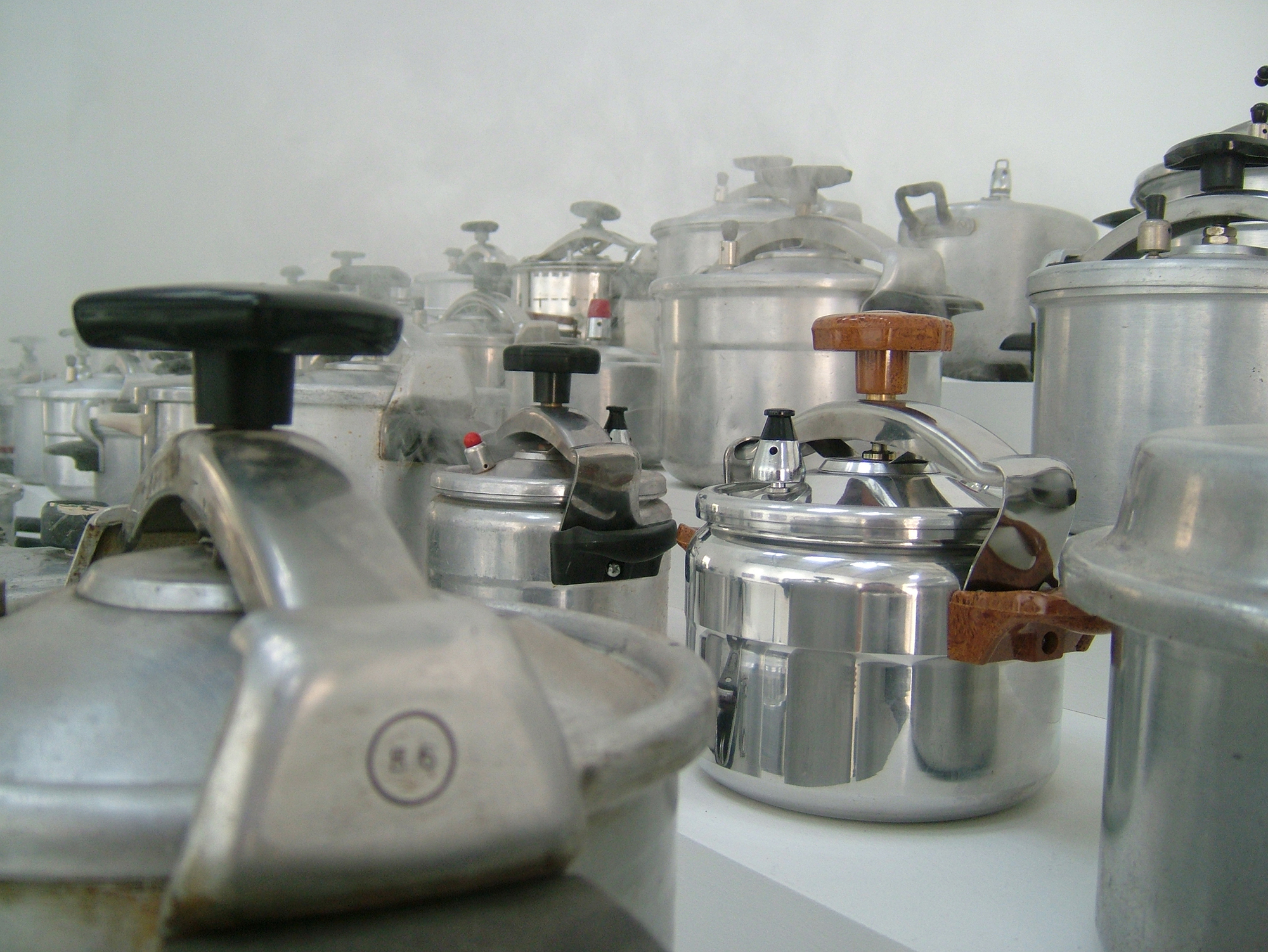The 2024 edition, ‘Crossing the Water’, is at once well intentioned and adrift in a sea of vague metaphor
The theme of the latest Lyon Biennale sounds like what you’d get if you typed ‘safe biennale theme 2024’ into ChatGPT. Subtitled ‘Crossing the Water’, this edition – guest-curated by Alexia Fabre, director of Paris’s Beaux-Arts art school – ‘has invited artists to give their own vision and experience of human relationships and being open to the Other, their sense of the things that unite and disunite us’. One might generously construe this as true to a moment in which the far right is winning elections across Europe by demonising foreigners, the European Union is drifting apart and the planet is in ecological meltdown. These factors, though, aren’t specifically imaged in the nine-site, 78-artist (many of them French), multigenerational show, such that the biennale seems at once well intentioned and adrift in a sea of vague, can’t-we-all-get- along metaphor.
One practical upside of this event, as with previous editions, is that it’s doable in a day and a half. The new flagship venue, a former train-manufacturing and maintenance site called Les Grandes Locos (shorthand, the catalogue suggests, for ‘repair’), is an epic pair of hangars full of space-eating but often impressive sculpture, installation and video; it requires some legwork, but the work itself – some new, some extant and repurposed – often hits fast. The reparative aspect is capsuled by Michel de Broin’s Mortier Fati – Lignes de lumière (2024): patched areas in the vaulted ceiling outlined in neon, glowing lines resembling an as-yet-unreadable, aleatory script. Pilar Albarracín’s blackly comical Marmites enragées (2006), suggesting the long history and latent possibility of a unified revolt, modifies some 50 pressure cookers to whistle (approximately) the socialist anthem The Internationale. Pavel Büchler’s audio installation LIVE (1999), installed in the big and beautiful communal workers’ bathrooms, consists of applause taken from 351 jazz, rock, pop, folk and classical records: here, it’s a spectral cheer for a vanished industrial age, and maybe the power of organised labour.


At the Musée d’Art Contemporain (macLyon), the thematic of support, tolerance, recognition and so on dilates, sometimes towards incoherence. Chantal Akerman’s 1971 16mm film (now video) In the Mirror, featuring an undressed woman finding fault with her body, abjures us to not do that to ourselves or others. Robert Gabris’s installation of dramatically spotlit sculpture plus video projection Asylum – A Poem of Unrest (2024) narrates intersectionality (he’s Roma and queer) and dissolving boundaries through costumes and video featuring human-insect hybrids. The late Sylvie Fanchon’s paintings fuse gestural abstraction with text phrases culled from the voice-assistant app Cortana and repeated URLs for the artist’s website; they’re punchy and funny and I don’t know why they’re here. Meanwhile, the show’s aquatic subtitle is box-ticked via Nadav Kander’s photograph Chongqing IV (Sunday Picnic) (2006), from a series of images taken along the 6,300km connecting tributary of the Yangtze River prior to the completion of the Three Gorges Dam; here, a family ‘adapt’ by picnicking beside the rubble of demolished homes.

Over at the Institut d’Art Contemporain in Villeurbanne, northeast of the city, a fusion is attempted: showcasing ten emerging artists while maintaining coherence. Evidently a wide range of artistic approaches can be made to fit the biennale’s therapeutic lean: Nadežda Kirćanski’s sparse and disconsolate installation, replicating a medical environment via furniture and projected photos of hospital doors and an unmanned desk, asks for empathy with the sick and vulnerable in Serbia, or the powerless generally (nista spec 1.0 / nothing special 1.0, 2018–24). In affective terms the standout is Matthias Odin, whose Vortex aEra Player (2024) memorialises people who’ve given him somewhere to stay by making quietly intense strip-lit vitrines housing bits of their furniture and personal effects; a further cramped walk-in installation mirrors the tiny dimensions of the smallest legal domicile in France. Meanwhile, the Cité Internationale de la Gastronomie de Lyon – Grand Hôtel-Dieu, a former hospital and now a chef’s school (‘hospitality’, ‘care’) pivots into classic ‘biennial art’: Annette Messager’s Eux et nous, nous et eux (2024), creepy stuffed toys bursting from seventeenth-century wooden cupboards, and Christian Boltanski’s video Animitas (blanc) (2017), a snowy field in which 800 Japanese bells tinkle in the wind, abjuring us to remember the dead too.
All of this inevitably skirts what used to be called compassion fatigue; here there’s nary a subset of society that it isn’t incumbent on us to understand, remember, sympathise with and support. Meanwhile, in a country where Marine Le Pen’s National Rally is in a potential kingmaker position in government, references to surging fascism are scant to invisible, certainly less present than those to shamanic rituals, even. Of course, art is famously keyed to questions rather than answers, but for all the broadly interesting and well-intentioned art on show here, the Lyon Biennale and the curatorial mindset it advertises suggests a deer-in-the-headlights approach to present strife. The shit is already all over the fan, and blandly exhorting people to care more about everyone and everything in sight isn’t enough.
17th Lyon Biennale: Crossing the Water, Various venues, Lyon, through 5 January
From the November 2024 issue of ArtReview – get your copy.
